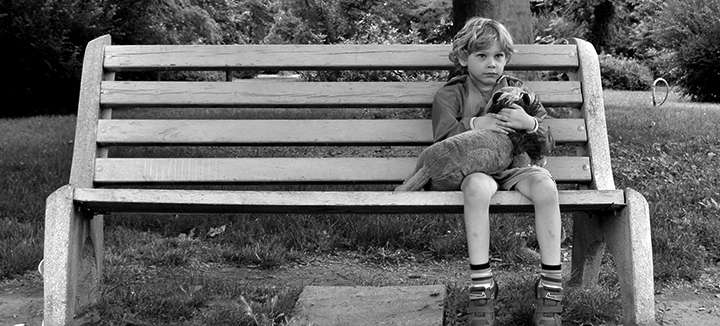Research suggests increase in abuse and neglect of adolescents

New research from the universities of East Anglia (UEA) and Warwick reveals an increase in adolescents who died or were seriously injured in which abuse or neglect is thought to be involved.
The research was commissioned by the Department for Education and is based on an analysis of 293 serious case reviews (SCRs) carried out in England between 2011-2014.
Serious Case Reviews
A serious case review (SCR) takes place after a child dies or is seriously injured and abuse or neglect is thought to be involved. It looks at lessons that can help prevent similar incidents from happening in the future.
The research was led by Prof Marian Brandon, professor of social work at UEA and director of UEA's Centre for Research on Children and Families, and Prof Peter Sidebotham, associate professor of child health of Warwick Medical School. The study, Pathways to Harm, Pathways to Protection: A Triennial Analysis of Serious Case Reviews 2011-2014, is the fifth-consecutive analysis of serious case reviews in England undertaken by the same research team dating back to reviews from 2003-2005.
Adolescents
Their research showed a small but significant increase in fatalities and non-fatalities amongst two age groups: 11- to 15-year-olds and 16-17 year olds. In the current review 28 per cent of SCRs were within the two older age groups, compared to the previous study when the figure was 22-25 per cent.
Prof Brandon said: "We found that the vulnerability of adolescents was often overlooked because they were considered to be already adult or thought to be resilient, when taking time to listen to them or to understand their behaviour would have revealed the extent of their difficulties. This was often the case with the young people who were sexually exploited and also of many of the young people who took their own lives."
Dr Sidebotham said: "Often people don't associate abuse and neglect with adolescents and most cases reported in the media involve younger children.
"However the increase in CSRs involving adolescents is a worrying trend. By adolescence the impact of long-standing abuse or neglect may be present in behaviours which place the young person at increased risk of harm."
Drug and alcohol misuse
The research highlighted that almost two-thirds of the young people aged 11-15 and 88 per cent of the older adolescents had mental health problems. Some responded to adversity by engaging in risk-taking behaviour including drug and alcohol misuse and offending. Others were placed at risk of sexual exploitation.
Dr Sidebotham said: "This group of adolescents may find themselves particularly vulnerable to online grooming. On a positive note, we found that being at school can promote good overall development and a buffer against adversities. Children not regularly in school due to poor attendance, home schooling or exclusion can be vulnerable due to their 'invisibility' and social isolation."
Child protection activity
Other key findings from the report were an increase in the number of serious case reviews carried out since 2012 – but this is against a backdrop of a steady year-on-year increase in child protection activity. Also there has been no change in the number of child deaths linked directly to maltreatment and a reduction in the fatality rates for all but the older adolescent age group.
The research found an average of 66 deaths per year in all age groups, compared to 73 deaths per year in the previous study from 2009-2011. Fatality rates had fallen from 4.67 to 3.78 per 100,000 in infants, but had risen from 0.31 to 0.65 per 100,000 in those aged 16-17. In the same time period, the numbers of referrals to children's services in this country had risen from 609,000 per year to 619,000 per year.
Only a small minority of children at the centre of a SCR (12 per cent) had a current child protection plan at the time of their death or serious harm. In contrast, more than two-thirds of children were or had been known to children's social care at some point prior to the incident leading to the SCR. The authors believe this suggests that once children are in the child protection system, they can be effectively protected. However, they also highlight that health, social care and education professionals are often dealing with large caseloads and complex cases which don't necessarily meet the thresholds for intervention. The authors of the report feel that support for professionals in delivering early help services could go a long way to mitigating the risks from abuse and neglect.
Concluding, the authors of the research stated they found many professionals had used effective methods of child safeguarding and they believe that harm suffered occurred in spite of all the work professionals were doing.
More information: Pathways to harm, pathways to protection: a triennial analysis of serious case reviews 2011-2014. seriouscasereviews.rip.org.uk/ … rotection_299616.pdf















